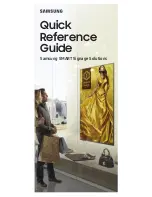
transport knob) should also be white, indicating that the film transport has been wound and the camera, too, is ready for exposure. If
the signal on the camera is red, simply wind the transport knob before attaching the magazine.
If the last frame still in the film aperture of the magazine is already exposed, the magazine signal is red. The camera signal then also
has to be red before you attach the magazine. If the camera signal should be white, simply release the shutter to make the signs
colours match. This boils down to the rule that both signals have to indicate the same colour (either red or white) before the magazine
is attached.
To attach the magazine to the camera, lower its front edge into the two hooks at the rear base of the camera, and push the magazine
against the camera body while pressing its locking catch to the right. Once the magazine makes full contact with the camera body,
move the catch to the left. After pulling out the sheath, the camera is ready to use.
Loading the Rollfilm Magazine
1. Remove the spool holder. First release the catch in the centre of the left-hand side (opposite to the side of the signal) and turn
it anti-clockwise. Pull out the spool holder.
2. Prepare the spool holder by turning the spool holder catch clockwise to open the film clamp and open up both spool holder
arms.
3. Load the film. Insert the empty take-up spool into the holder with the milled knob. Place the full film spool into the opposite
holder. Remove the seal and pull out approximately 4 in. of paper, the black side of the paper facing you. (The spool must be
inserted so that the backing paper comes off from underneath.) Keep the thumb pressed against the spool to prevent the film
from unwinding itself. Draw the free paper across the front of the pressure plate but under the film clamp. Hold the paper in
position by turning the spool holder catch anti-clockwise. Now fix the paper end into the slot of the take-up spool. Take up the
slack by turning the milled knob protruding from the take-up spool chamber.
4. Insert the loaded spool holder into the magazine shell (make sure that its sheath is in position), and turn the release catch
clockwise. This has the double action of locking the spool holder in position and releasing the clamped-down paper.
5. Set the first exposure. Open the film window cover in the back of the magazine and turn the winding knob until No. 1 appears in
the rear window. The winding key is the key in the right-hand side of the magazine, i.e. the same side as the signal window and
the film counter window. Now turn the film winder anti-clockwise as far as it will go. Always keep the film window cover closed -
except when getting the magazine ready for the first exposure.
This causes No. 1 to appear in the automatic film counter window on the winder side of the magazine. Always set the counter
window to No. 1 immediately; if this is overlooked you will get uneven spacing between the individual negatives and possibly
lose the last exposure.
6. Set the film indicator. This is advisable even if only one magazine is used, and becomes essential when you work with several
types of film. The film indicator is on the back of the magazine. On it you can set the speed of the film in ASA and DIN (white
figures on black) and also the type of material. The latter you set in the cut-out by turning the milled centre button.
The various symbols are as follows:
red star with + sign = daylight colour reversal film;
red star with - sign = daylight or universal colour negative film;
red bulb with - sign = artificial light colour reversal film;
red bulb with - sign = artificial light colour negative film;
divided black and white circle = black-and-white film.
7. Attach the loaded magazine to the camera (see page 18). However, there is no need to remove the magazine from the camera
at all for reloading, as all the steps are equally possible while the magazine is on the camera.
The metal panel indicating the film plane on the outside of the magazine (a circle with a vertical line through it) may be used for pencil
notes, e.g. exposure, developing or subject data. The notes can be removed with a damp cloth or india rubber.
Unloading the Rollfilm Magazine
After all exposures have been made, the shutter release on the camera is automatically blocked. So you cannot accidentally take
pictures without film. The film counter window in the side of the magazine always shows the number of exposures. When this reaches
No. 12 (or No. 16 with the 16-exposure magazine), unload the film. There is no need to remove the magazine from the camera for
unloading.
1. Wind off the film end. Turn the winding key until the paper end disappears in the film window in the back of the magazine (open
the cover to check) and the film completely wound on to the take-up spool.
2. Remove the spool holder as described for loading.
3. Remove the full spool of film from the spool holder. Seal the end down to prevent accidental unrolling.
4. Re-insert the spool holder into the magazine (as described for loading, step No. 4), or reload with film.
Early Magazines
Magazines of serial numbers below 20000 are of a somewhat hat different construction and will not fit the Hasselblad 500C or Super
Wide C. The current magazines will fit all models
These early magazines can be recognized by the exposure counter window which is below the film transport key. On the current ones
the film counter is close to the signal window. Also the film window cover on the back has no film type and speed indicator.
Early magazines have no automatic release lock to prevent exposures beyond the last film frame.
www.mr-alvandi.com
Содержание 1000 F
Страница 18: ...WILD LIFE www mr alvandi com ...
Страница 52: ...THE CUT FILM ADAPTOR www mr alvandi com ...
Страница 54: ...Daylight Exposure Values www mr alvandi com ...
Страница 55: ...Filters for Black and White Film www mr alvandi com ...
Страница 57: ...Colour Temperatures and Light Sources Light Balancing Filter Data Filter Equivalents www mr alvandi com ...
Страница 59: ...Close Ranges with 50 60 mm Distagon and Planar 80 mm www mr alvandi com ...
Страница 60: ...Close Ranges with 120mm S PLANAR 150 200 mm SONNAR www mr alvandi com ...
Страница 61: ...Focusing Ranges with the Extension Bellows Shutter Speeds to Arrest Movement www mr alvandi com ...
Страница 62: ...Conversion of Film Speed Systems Colour Films www mr alvandi com ...
Страница 63: ...Black and White Films www mr alvandi com ...
Страница 64: ...www mr alvandi com ...











































